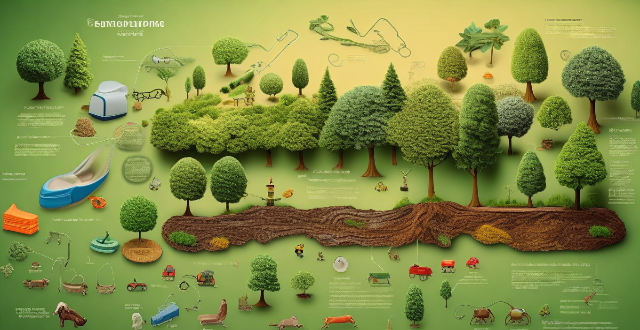This text discusses the interconnected reality of climate justice and environmental racism. It defines both terms, outlines their intersection in terms of historical and structural inequities, disproportionate impacts, mitigation and adaptation inequities, and exclusion from decision-making processes. It then proposes solutions to address this intersection, including promoting participatory democracy, equitable allocation of resources, enforcing environmental justice legislation, and building resilience through education and capacity building. Overall, it emphasizes the need for a more equitable approach to environmental protection and climate action that recognizes and challenges the root causes and impacts of environmental racism within the broader context of climate justice.

Climate Justice and Environmental Racism: An Interconnected Reality
Defining the Terms
- Climate Justice: The concept advocating for equitable treatment in terms of climate change impacts, adaptation measures, and mitigation efforts. It emphasizes the need for those least responsible for climate change to receive the most support and protection, often focusing on vulnerable populations and future generations.
- Environmental Racism: A form of discrimination where predominantly racial or ethnic minority communities bear a disproportionate share of the negative environmental consequences resulting from industrial activities, waste disposal, and/or climate change effects. This can include living near polluting facilities, lacking access to clean air and water, and being excluded from environmental decision-making processes.
The Intersection of Climate Justice and Environmental Racism
Historical and Structural Inequities
- Historical patterns of systemic racism have led to socioeconomic disparities that place certain communities at increased risk from environmental harm.
- Economic marginalization often results in limited political power, which can mean reduced influence over decisions affecting local environments and resource allocation.
Disproportionate Impacts
- Vulnerable populations, including low-income and racial/ethnic minority groups, are more likely to live in areas prone to environmental hazards such as flood zones or near polluting industries.
- These communities often suffer greater health impacts from pollution due to lack of resources for protective measures or medical care.
Mitigation and Adaptation Inequities
- Access to information, resources, and technology for climate change adaptation and mitigation is unequal, with disadvantaged communities frequently left without adequate support.
- Policies and funding for climate action often do not reach or sufficiently benefit these groups, perpetuating cycles of vulnerability.
Exclusion from Decision-Making Processes
- Marginalized communities are frequently overlooked or excluded from discussions and decisions about environmental policies and projects that directly affect their lives.
- Without a seat at the table, these communities cannot advocate effectively for their needs and rights regarding environmental protections.
Addressing the Intersection
Promoting Participatory Democracy
- Ensure that all voices, especially those of affected communities, are heard and valued in environmental planning and policy-making.
- Engage communities in dialogues and decisions about infrastructure projects, land use, and conservation strategies.
Equitable Allocation of Resources
- Allocate resources for climate adaptation and mitigation in a manner that prioritizes the needs of vulnerable and marginalized communities.
- Invest in infrastructure and programs that specifically aim to protect and enhance the environmental quality of these areas.
Enforcing Environmental Justice Legislation
- Strengthen and enforce existing environmental justice laws to prevent the disproportionate siting of noxious facilities in disadvantaged neighborhoods.
- Hold polluters accountable for the harm they cause to public health and the environment, especially in vulnerable communities.
Building Resilience through Education and Capacity Building
- Empower communities through education about environmental rights, climate change impacts, and strategies for community-led adaptation and mitigation.
- Provide training and support for community members to become effective advocates for environmental justice issues.
In summary, climate justice and environmental racism are deeply intertwined issues. Addressing one requires engaging with the other. By recognizing the root causes and impacts of environmental racism within the broader context of climate justice, we can begin to build a movement toward a more equitable approach to environmental protection and climate action. This involves not only addressing immediate concerns but also challenging the structural inequities that perpetuate environmental injustices.